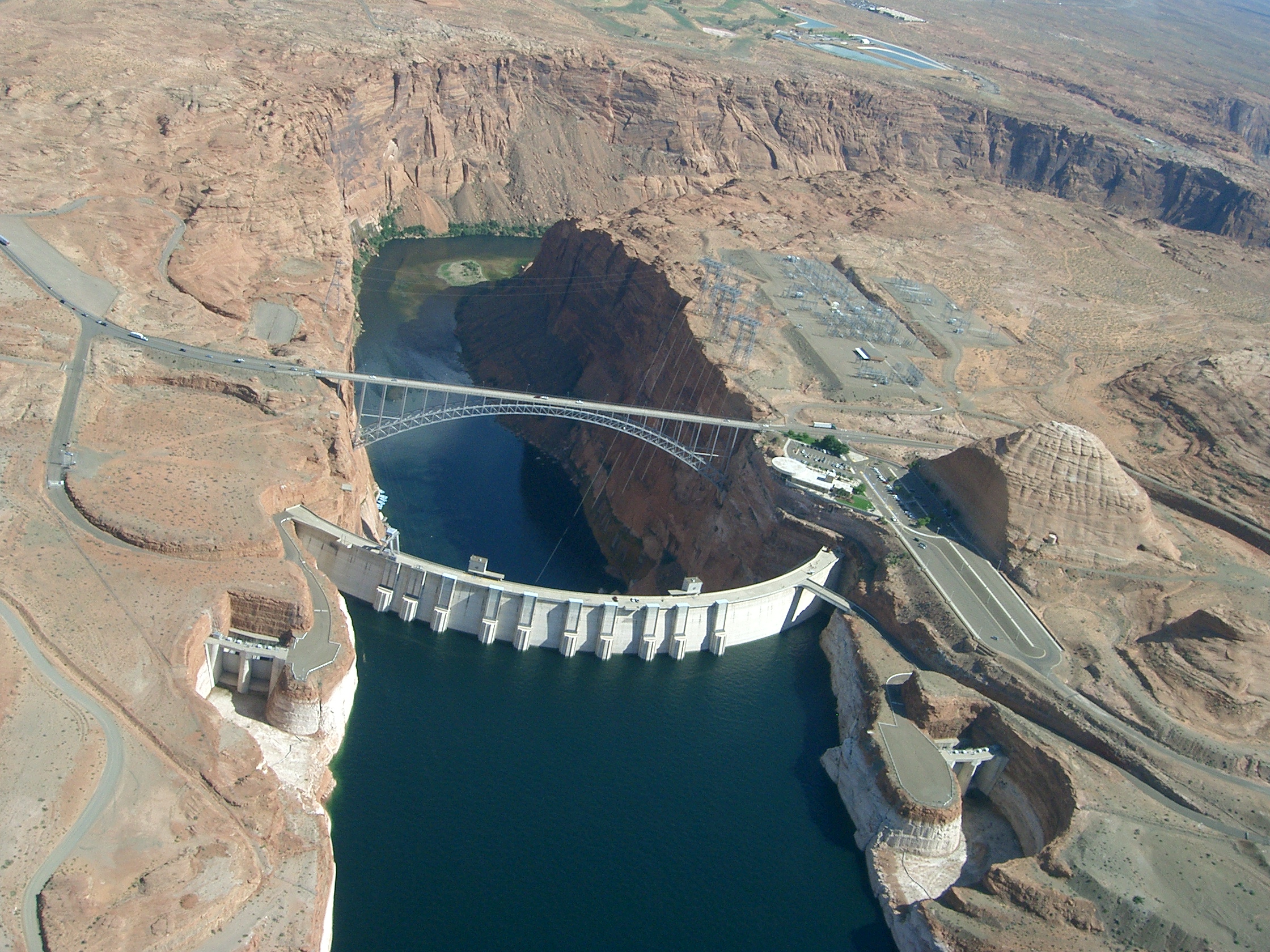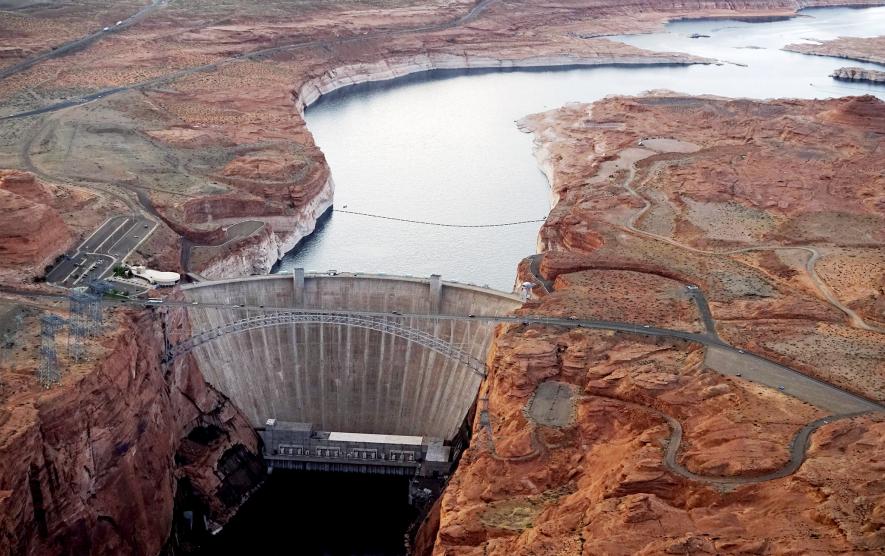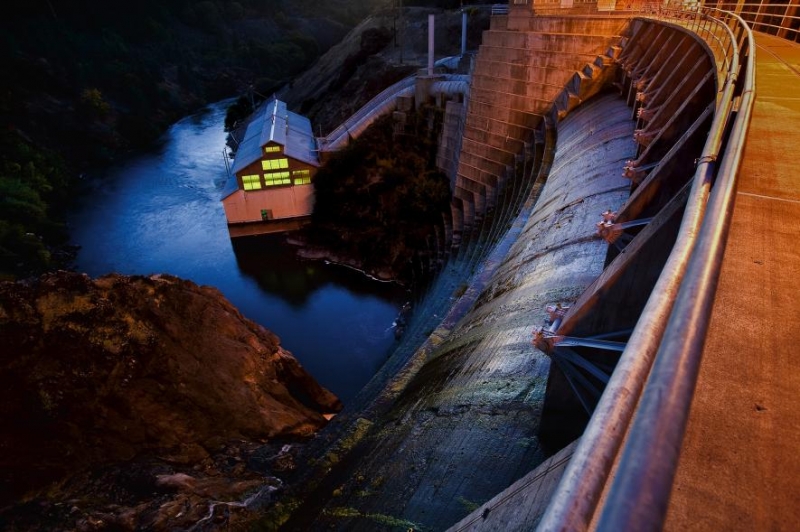Glen Canyon Dam began its life with an explosion. Congress authorized the dam’s construction on this day in 1956, and about seven months later, then-president Dwight D. Eisenhower pressed a telegraph key in the Oval Office, sending the signal to blast a string of dynamite wedged in the side of a sinuous canyon. Boulders sprayed through the air at Arizona’s northern border, and workers began drilling a tunnel to temporarily redirect the flow of the Colorado River while they built the base of the dam.
Monstrous Lake Powell filled in behind the 710-foot dam, drowning Glen Canyon’s otherworldly red-rock amphitheaters and slot canyons under its silty depths.
These days, when dams in the U.S. make news, it’s often concrete getting blasted, not bedrock. And last week, the biggest dam-removal project in history got a crucial endorsement.
Federal officials, the states of Oregon and California, and the utility PacifiCorp signed a pair of agreements opening the way for removal of a whopping four hydroelectric dams on the Klamath River, which flows from Oregon through Northern California.
“It’s certainly the most significant dam removal and restoration project ever undertaken,” says Steve Rothert, California regional director of American Rivers, an environmental advocacy group.
Nationwide, more than 1,300 dams have been removed as of 2015. The Elwha and Glines Canyon Dams were blown out of Washington’s Elwha River between 2011 and 2014. Between 2011 and 2012, the Condit Dam vanished from the state’s White Salmon River.
Such projects allow backed-up rivers and the fisheries they once supported to be reborn. They reflect a broader shift in the way Americans relate to rivers, seeing them as more than just workhorses for hydropower, agriculture, and economic growth.

image:Wikipedia
Historically, the Klamath River system above the dams supported between 10,000 and 149,000 naturally spawning Chinook salmon, and 18,000 to 30,000 spawning steelhead each year. According to Rothert, it was the third most important fishery on the West Coast behind the Columbia and Sacramento Rivers.
The Klamath dams themselves have blocked fish passage for a century, severing some local tribes from a food source they’ve relied on for millennia. And the fish that survive in the system have had major die-offs due to toxic algae blooms, warm water, and disease. “To me, it’s an environmental injustice,” says Klamath Tribes Chairman Don Gentry. “Many people have benefited from the development and changes at the expense of the resource and the tribes. It’s only right to restore the fishery back to us.”
Under the agreement’s terms, the dams will be removed by 2020, opening up 420 miles of connected habitat for fish and potentially helping boost numbers of some species by 80 percent.
“And from a whitewater recreation standpoint, you’re going to be looking at a multiday river trip down through that system that will be remarkable,” says Dave Steindorf, California stewardship director for the group American Whitewater.
Other dam removal projects have been extraordinarily successful. On the Elwha, “I think that everybody has been pretty amazed at what happened with the estuary,” says Mike McHenry, habitat biologist for the Lower Elwha Klallam Tribe. As the sediment trapped behind the dams spilled out and settled near the end of the river, “almost overnight it converted from a steep, cobbly, high-energy environment to a sloped, sandy, lower-energy environment,” forming a critical haven for salmon transitioning between freshwater and saltwater and helping set the stage for further recovery.
Efforts to remove dams reflect a broader evolution in U.S. values, says John Seebach, American Rivers’ vice president of river conservation. We’ve moved from an era when the focus was solely on fostering development by boosting the water and power supply to one in which a growing national environmental conscience resulted in the passage of environmental laws like the Endangered Species Act, which shields dwindling salmon stocks and other creatures from extinction.
Most of the dams being removed are small and not a source of hydroelectric power, Seebach notes. And overall, economics are a big driver behind the dam-removal trend, if it can be called that: Some dams just aren’t worth the cost anymore.
Dams periodically have to be relicensed, at which point they must be brought up to current environmental standards to keep operating. With the Klamath and several other dams, taking them down turned out to be cheaper than trying to retrofit them with fish passages and other upgrades.
For those dams with clearer economic benefits, the calculus is much trickier, as are the politics. And many existing dams are significant sources of renewable electricity, which makes them valuable in the fight against climate change. How many more dams we decide to take out once the “low-hanging fruit” is gone, says Seebach, “depends on what we as a society decide to prioritize.”
Perhaps, then, behemoths like the Glen Canyon Dam are safe for a long time. But Steven Hawley, author of the book Recovering a Lost River, about efforts to remove four dams on the Lower Snake River in Washington, believes its time should come by mid-century. Drought has shrunken Lake Powell dramatically. If the water level drops low enough in the coming decades, the electricity generated by the 1,320-megawatt dam will slump, reducing the structure’s economic benefits, Hawley argues. “Why can’t we blow up a dam after 50 years if we decide we don’t need it anymore?”

image:NAT GEO
USA Records Organization_USKINGS are still collecting more information from many sources and it is our pleasure listening to everybody's comments to have a full evaluation of the USA Around You:' This Will Be the Biggest Dam-Removal Project in History'
According to nationalgeographic
USA RECORDS ORGANIZATION_USKINGS



